How To Fade Chickenpox Scars
Thankfully, there are a host of remedies to help your skin recover and prevent scarring.
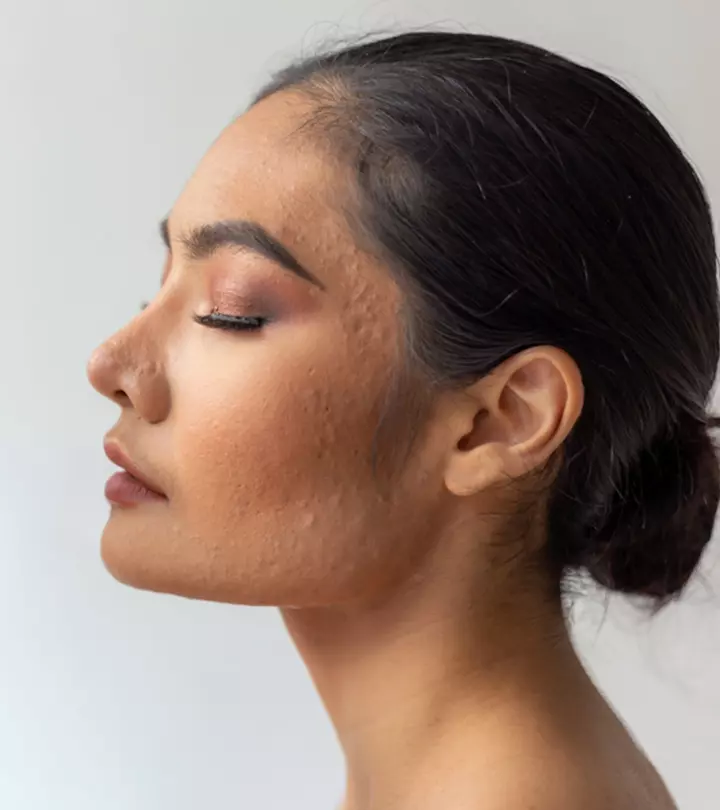
Image: ShutterStock
Chickenpox is a highly contagious viral disease and causes blisters on the skin. Scratching them can lead to scarring and skin damage. Chickenpox scars can be bothersome if they are on the face. Keep reading to learn the natural remedies and other treatment options to fade them and improve their appearance.
 Trivia
TriviaIn This Article
What Causes Chickenpox Scars?
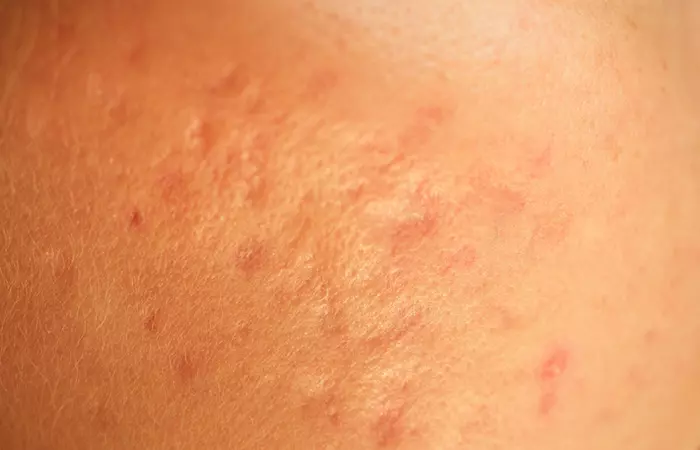
Chickenpox is a common childhood disease caused by the varicella-zoster virus that can result in scars, post-inflammatory hyperpigmentation, and blistering. Vaccination is the best prevention method of reducing the risk of this contagious disease by activating the immune system.
However, you may experience extreme itchiness during this period, and most of the patients scratch the blisters to relieve the itching. This can cause a deeper wound at the area, and as the skin heals, you may develop depressed scar tissue. The next section discusses the common types of chickenpox scars.
Key Takeaways
- The blisters caused during chicken pox leave behind unsightly scars that can be reduced with some home remedies.
- These scars are either indented, depressed, or round.
- Treat these scars with natural remedies like aloe vera gel, shea butter, and rosehip seed oil.
- Medications that may be prescribed are retinoic acid, chemical peels, and scar removal creams.
- Medical treatments to treat scars are laser resurfacing, microneedling, microdermabrasion, and punch excision.
Types Of Chickenpox Scars
Chickenpox scars are generally atrophic scars. Their common traits are:
- They appear indented and depressed.
- They are round (5-10mm diameter)
Hypertrophic (raised) scars and keloids are uncommon after chickenpox. Atrophic scars are caused when the skin cannot produce enough collagen to cover the depressed area. As a result, the skin looks pitted and rough.
Post-inflammatory hyperpigmentation: This happens when dark spots form on the skin where the chickenpox blisters heal. Unlike deep scars, these spots usually diminish with time but may need extra treatments to speed up the fading process.
Dermatology experts recommend self-care practices and cosmetic procedures like laser therapy and topical creams to soothe these scars. Here is what you can do to improve the appearance and learn how to remove deep chicken pox scars naturally.
How To Get Rid Of Chickenpox Scars: Natural Remedies And Medical Treatments
Home Remedies For Chickenpox Scars
Once you’ve recovered, your main focus may be to get rid of chickenpox scars. These remedies may not fade old scars. However, if you are recovering from chickenpox, they may help in proper wound care and prevent scarring.
1. Aloe Vera Gel
Aloe vera can reduce inflammation, promote proper wound healing, and reduce scar tissue size (1).
It can also soothe the skin and relieve itching. You can massage the affected area with fresh aloe vera gel and leave it on overnight.
2. Shea Butter
Shea butter is a popular remedy to reduce keloidi Harmless thick raised scar after the healing of the injury, usually on earlobes, cheeks, shoulders and chest. scars after a surgical procedure (2). It is rich in omega-3 fatty acids and moisturizes the skin. Massaging the affected area with shea butter can keep the area hydrated, maintain its elasticity, reduce itching, and prevent scarring.
3. Rosehip Seed Oil
The antioxidants and the phytochemicalsi Bioactive nutrients found in plants that provide health benefits and reduce the risk of major chronic diseases. present in rosehip seed oil make it an excellent choice for scar management (3). It can reduce skin dryness and help improve the appearance of scars. You can massage the affected area with rosehip seed oil regularly to achieve the desired results.
Over-The-Counter Treatments
1. Retinoic Acid
This vitamin A derivative boosts collagen production and is widely used to minimize wrinkles and fine lines. When used with glycolic acidi The chemical compound obtained from sugar cane present in foods and used in skin care products to the top layer of dead skin cells. , it can effectively reduce scars (4).
2. Chemical Peels
OTC chemical peels containing glycolic acid can help improve skin texture. It sloughs away the dead skin cells, promotes cell regeneration, and fades scars. Doctors may use medium-deep or deep chemical peels, depending on the scar severity (5). However, consult a doctor before using OTC chemical peels and follow the instructions mentioned in the package. Else, they may irritate the skin, cause chemical burns, and worsen the skin.
3. Scar Removal Creams
These formulations contain an assortment of ingredients that can reduce the appearance of scars and fade them. You can also seek your dermatologist’s advice on what cream to use for chickenpox scars.
A YouTuber shared her experience of using scar removal creams recommended by her to remove chickenpox scars. She explained, “This has really helped me. I think I use this for two months at least. I think just at night I would suggest to use all of these things probably at the night time. This actually has really helped me (i).”
4. Silicone Sheets
Silicone sheets are primarily used to treat keloids and hypertrophic scars. They hydrate the skin tissues to shrink and flatten scars to promote healing and subsequent fading (6).
Professional And Medical Treatment
are tough to fade and may require medical treatment. Here are a few treatments that the dermatologist may suggest:
1. Laser Resurfacing
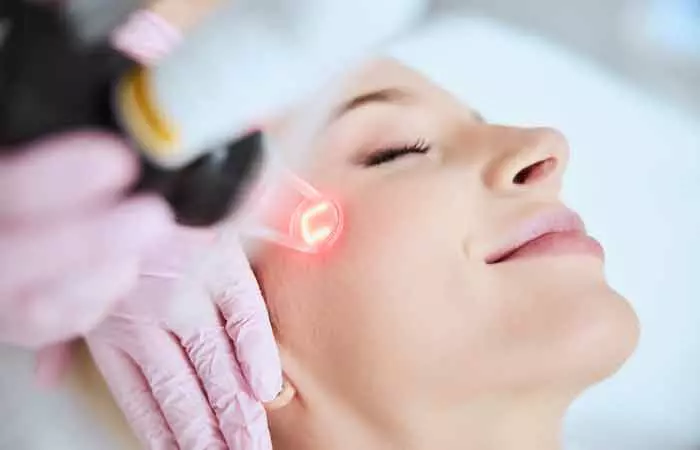
In this treatment, lasers of specific wavelengths are used to boost collagen production in the affected area and fade the scars. This is performed by a trained professional and is minimally invasive. However, you may have to go for multiple sessions.
2. Microneedling

Microneedling is a process where the skin is punctured with needles to create micro-injuries. This tricks the skin to produce collagen to heal the injury, which helps minimize the appearance of the scars. This treatment is performed by trained professionals using needles of varying thickness, depending on the scar depth. You can also buy at-home microneedling devices. However, doing it at home can injure your skin and worsen the scars.
 Trivia
Trivia3. Microdermabrasion
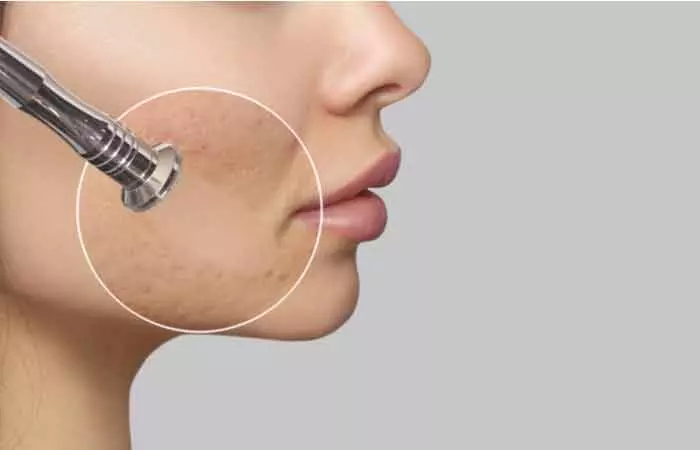
Microdermabrasion can help fade chickenpox scars by sanding away the epidermis using a crystal tip device that rotates at high speed. Sloughing away the topmost layer promotes cell regeneration and improves the skin texture.
4. Chemical Peels
Chemical peels exfoliate the skin, promote skin regeneration, and fade the scars. The in-office chemical peeling uses medical-grade solutions that give better results than the at-home OTC peels. The downtime and recovery depend on whether you opt for a light, medium, or deep peel.
5. Dermal Fillers
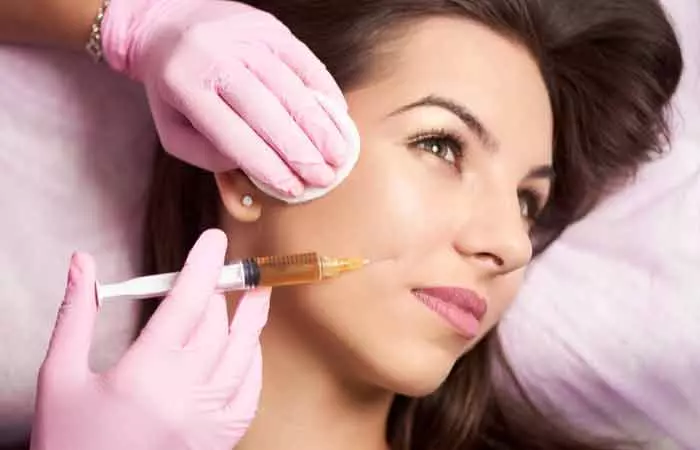
Fillers can reshape the depressed and sunken scars. Dermal fillers are made of hyaluronic acidi A slippery and gooey substance produced naturally by the body that lubricates skin, eyes, and joints. and healthy fats, which are injected under the scar tissues to reduce the indentation. However, this treatment only lasts six months.
6. Punch Excision
This treatment is recommended for deep, severe, pitted, or sunken scars. In this treatment, the dermatologist will numb your skin and use a punching tool to remove the scar surgically and stitch the skin.
7. Skin Grafting
Skin grafting is a surgical procedure used to treat severe chickenpox scars. The procedure involves removing a thin layer of healthy skin from an unaffected area and placing it over the scarred area. This can help minimize the appearance of deep or pitted scars, improving the skin’s texture and appearance. Skin grafting is quite effective and is typically done when other treatments have been unsuccessful. It requires careful post-operative care to ensure the successful integration of the graft. This procedure can take 4-6 months. Hence, talk to your dermatologist and understand the benefits and risks involved before opting for this surgical procedure.
Taking care of the blisters during the recovery phase can reduce the risk of scarring. Here is what you have to do to avoid chickenpox scars.
How To Prevent Scarring From Chickenpox
- Avoid scratching or picking the dried blisters. Do not remove the flakes forcefully.
- Always use the prescribed antibiotic to prevent secondary infection.
- Keep the chickenpox blisters moisturized to alleviate itching.
- Prepare an oatmeal bath and soak in it to soothe your skin.
- Wear sunscreen to prevent UV damage and further collagen degradation.
- Consult the doctor and take oral antihistaminesi Medicines that treat cold and flu symptoms, motion sickness, and allergic reactions, like running nose and fever. to relieve the itching. However, avoid using topical antihistamines.
- Use moisturizing creams and products that contain natural ingredients like aloe vera, cocoa butter, argan oil, and coconut oil to soothe the skin and prevent scarring.
- Eat a balanced diet that includes vitamins A, C, and E. Anecdotal evidence suggests that these vitamins may help your skin heal faster and improve regeneration, reducing the risk of scarring.
Infographic: 6 Effective Ways To Fade Chickenpox Scars
While chickenpox lasts for only a few days, its aftermath can leave lasting reminders on our skin. Lucky for you, there are several methods to minimize these scars. These range from simple kitchen ingredients to medical treatments. Check out the infographic below for the best ways to get rid of those pesky scars.

Illustration: StyleCraze Design Team
Chickenpox often leaves behind scars that may take time to fade. It is important to know how to remove chicken pox marks. Proper wound healing and management are crucial to preventing chickenpox scars. Avoid picking at the dry blisters. If they itch, use moisturizing ingredients like aloe vera gel and shea butter to soothe the blisters and prevent itching and dryness. This will prevent further wounds and deep scars. However, if you have old scars, you must consult a dermatologist and opt for skin treatments to fade them. While it is impossible to get rid of the scars, these treatments may help fade them and make them less noticeable.
Frequently Asked Questions
Can chicken pox scars be removed naturally?
Yes. Chickenpox scars are not permanent and fade away naturally within 6-12 months if one is not severely infected. Natural remedies like aloe vera help accelerate the fading of chicken pox scars.
Can you get chicken pox twice?
Only in rare cases. But most often, you can get it only once in a lifetime (and you develop immunity against it after that). This is called breakthrough varicella.
Which is worse, smallpox or chickenpox?
Smallpox is worse than chickenpox. It causes fever, rashes, and blisters, just like chickenpox, but they are more severe. That said, smallpox has been eradicated.
Can we apply turmeric on chicken pox?
Turmeric paste helps soothe the itching and irritation associated with chickenpox (7). However, more studies are warranted in this regard.
What skincare products should be avoided during the recovery phase of chickenpox?
Avoid skincare products with alcohol, strong fragrances, or harsh exfoliants, as these can irritate the skin and increase the risk of scarring.
Illustration: How To Remove Chickenpox Scars From The Skin
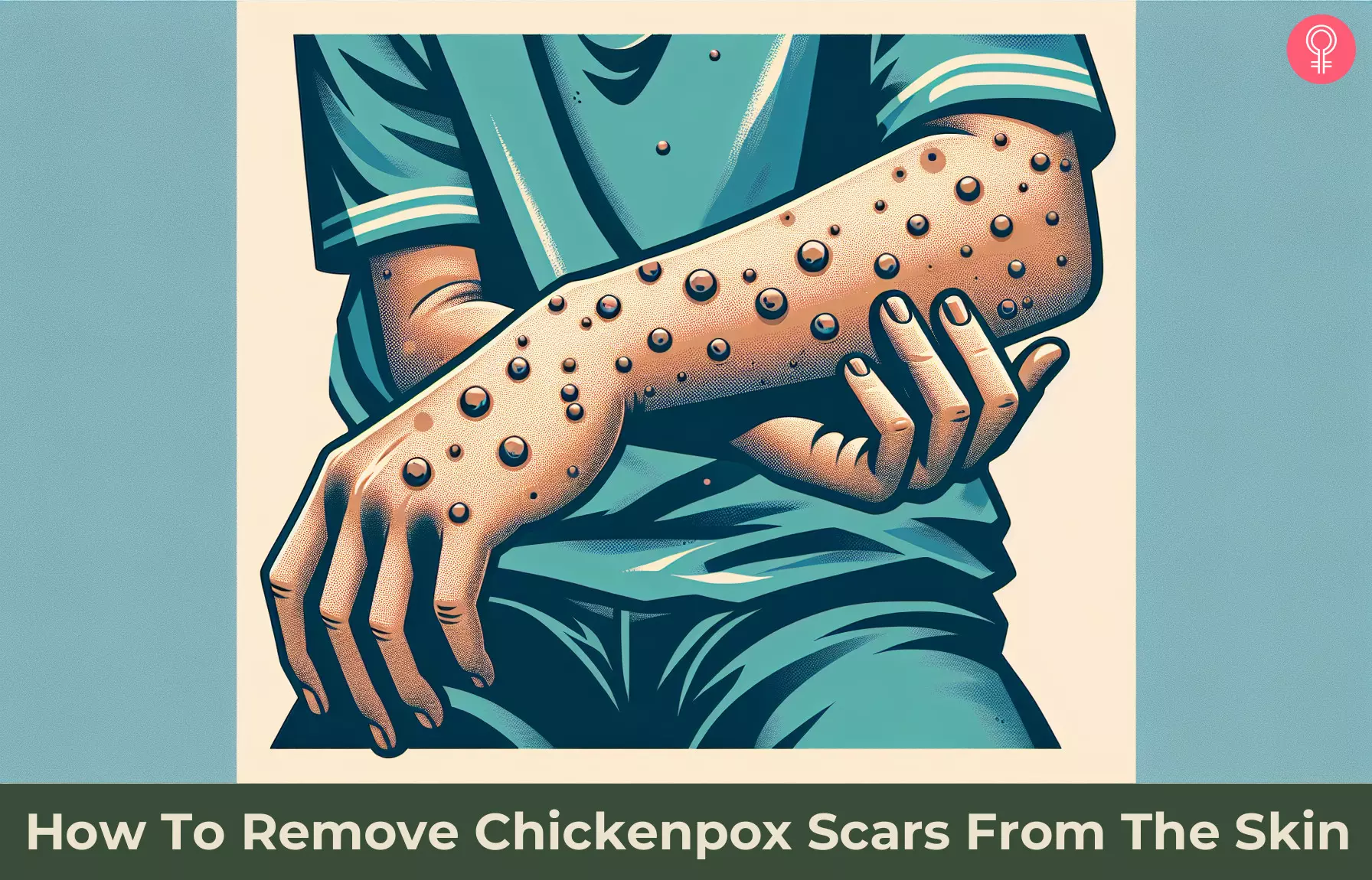
Image: Dall·E/StyleCraze Design Team
Learn how to remove chicken pox scars with 5 simple Ayurvedic remedies for a glowing complexion. Watch this enlightening video and get ready to look radiant!
Personal Experience: Source
StyleCraze's articles are interwoven with authentic personal narratives that provide depth and resonance to our content. Below are the sources of the personal accounts referenced in this article.
i. How I cleared my chickenpox markshttps://www.youtube.com/watch?v=i_51Ucuov2M
References
Articles on StyleCraze are backed by verified information from peer-reviewed and academic research papers, reputed organizations, research institutions, and medical associations to ensure accuracy and relevance. Read our editorial policy to learn more.
- Topical Application of Aloe vera Accelerated Wound Healing Modeling and Remodeling: An Experimental Study
https://pubmed.ncbi.nlm.nih.gov/25003428/ - Inhibitory Activities of Omega-3 Fatty Acids and Traditional African Remedies on Keloid Fibroblasts
https://www.ncbi.nlm.nih.gov/labs/pmc/articles/PMC3905615/ - Evolution of Post-Surgical Scars Treated with Pure Rosehip Seed Oil
https://www.scirp.org/journal/PaperInformation?paperID=57497 - Retinoic acid and glycolic acid combination in the treatment of acne scars
https://www.ncbi.nlm.nih.gov/pmc/articles/PMC4375771/ - Evidence and Considerations in the Application of Chemical Peels in Skin Disorders and Aesthetic Resurfacing
https://www.ncbi.nlm.nih.gov/pmc/articles/PMC2921757/ - Topical Silicone Sheet Application in the Treatment of Hypertrophic Scars and Keloids
https://www.ncbi.nlm.nih.gov/pmc/articles/PMC5104309/ - Turmeric, the Golden Spice
https://www.ncbi.nlm.nih.gov/books/NBK92752/
Read full bio of Dr. Sravya Tipirneni
Read full bio of Ramona Sinha
Read full bio of Anjali Sayee
Read full bio of Shiboli Chakraborti







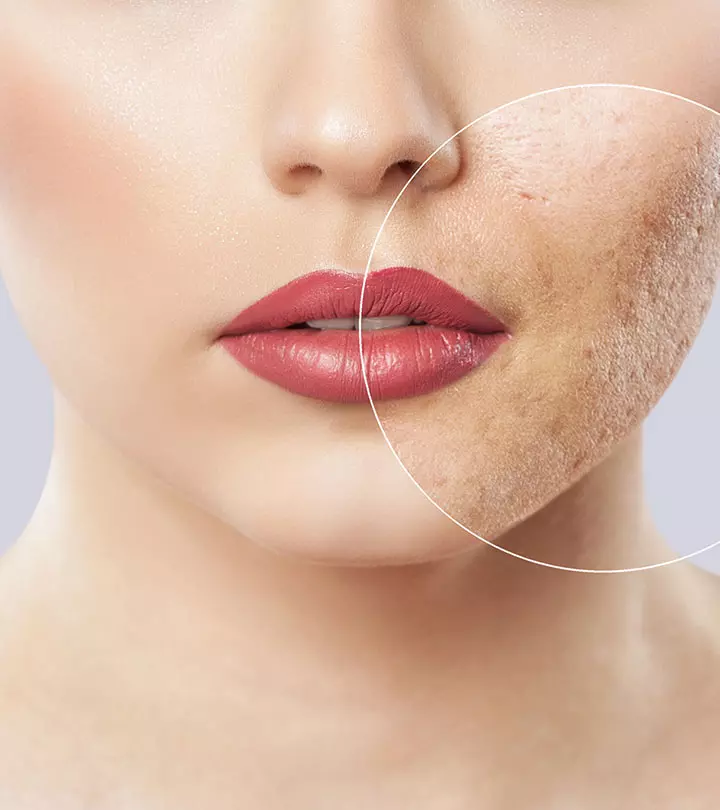
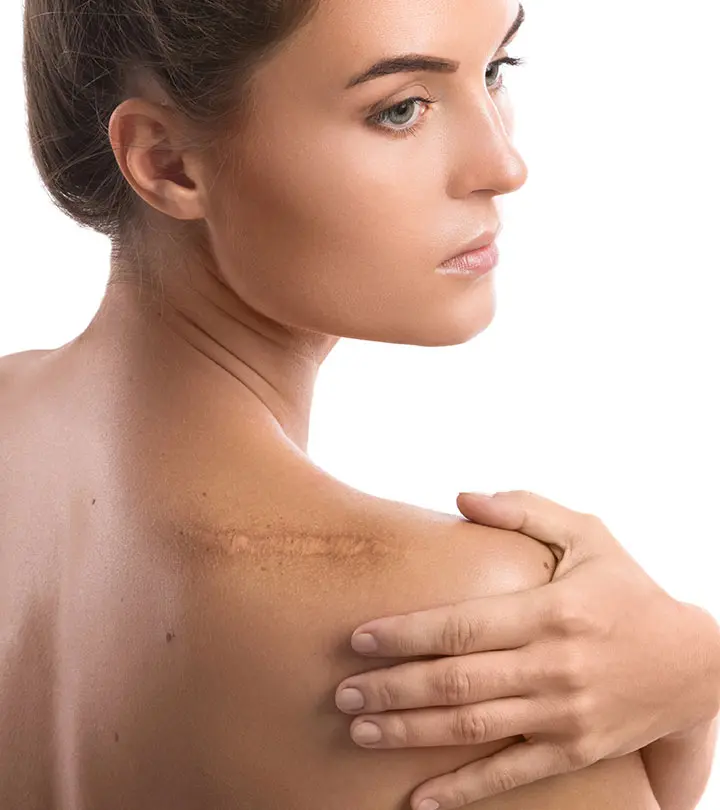

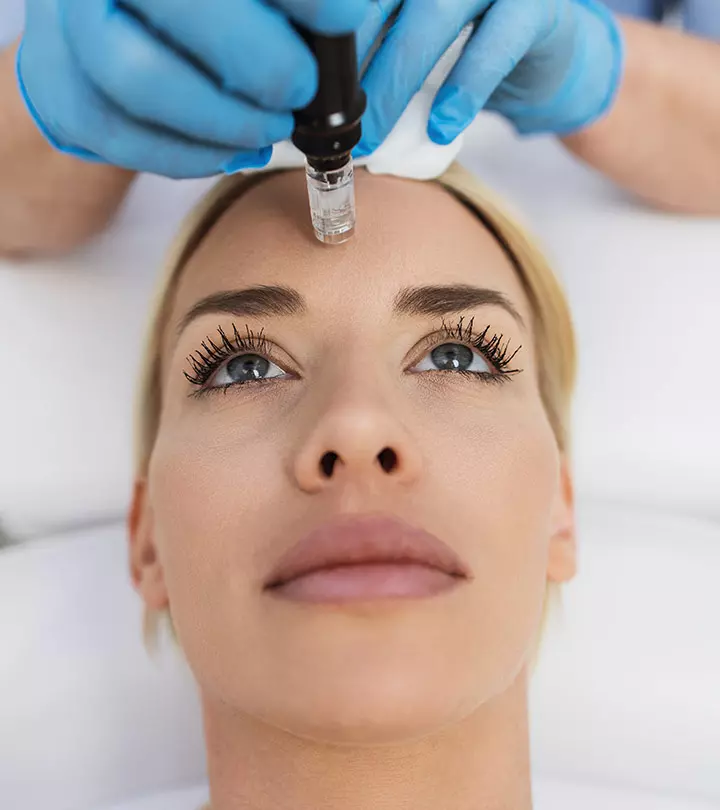


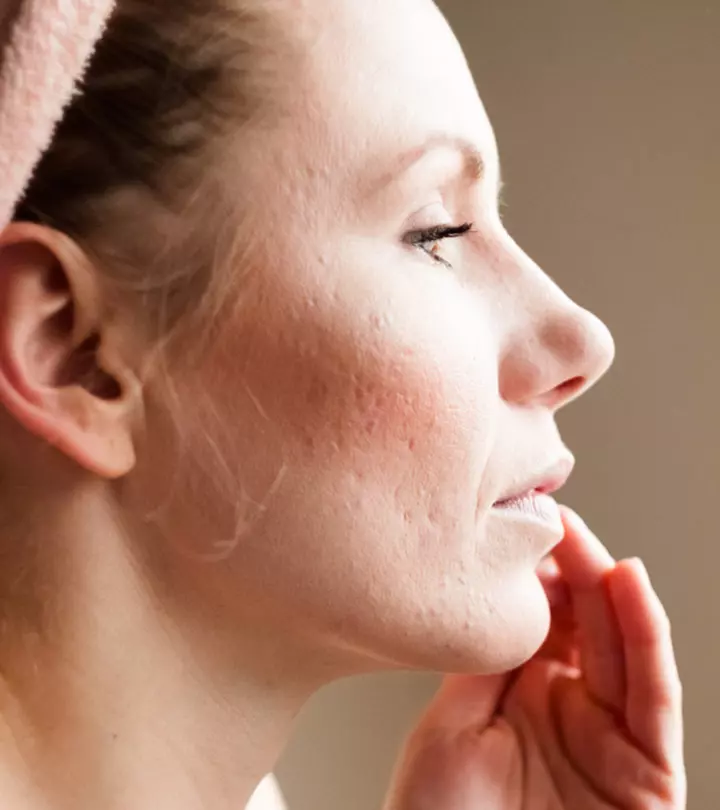




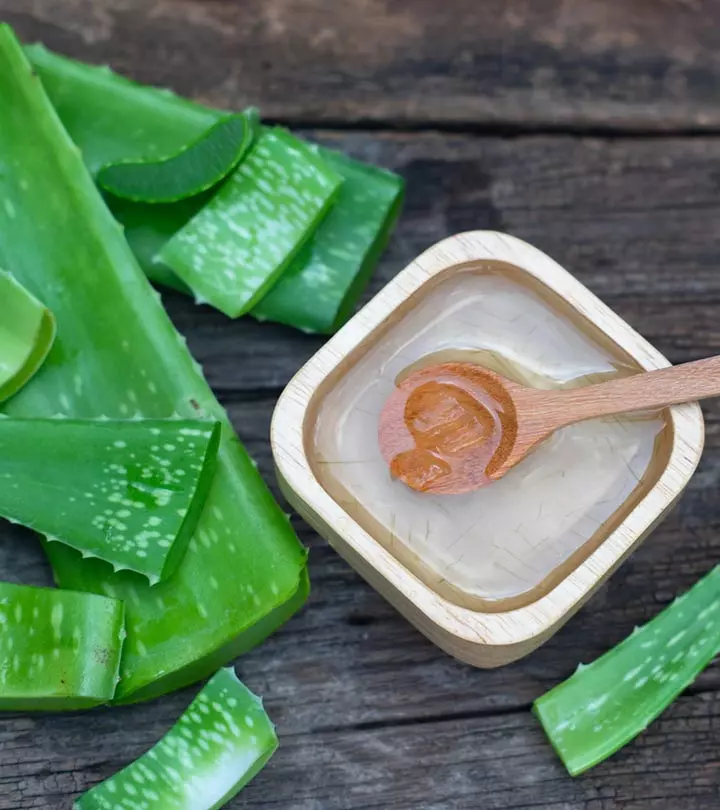
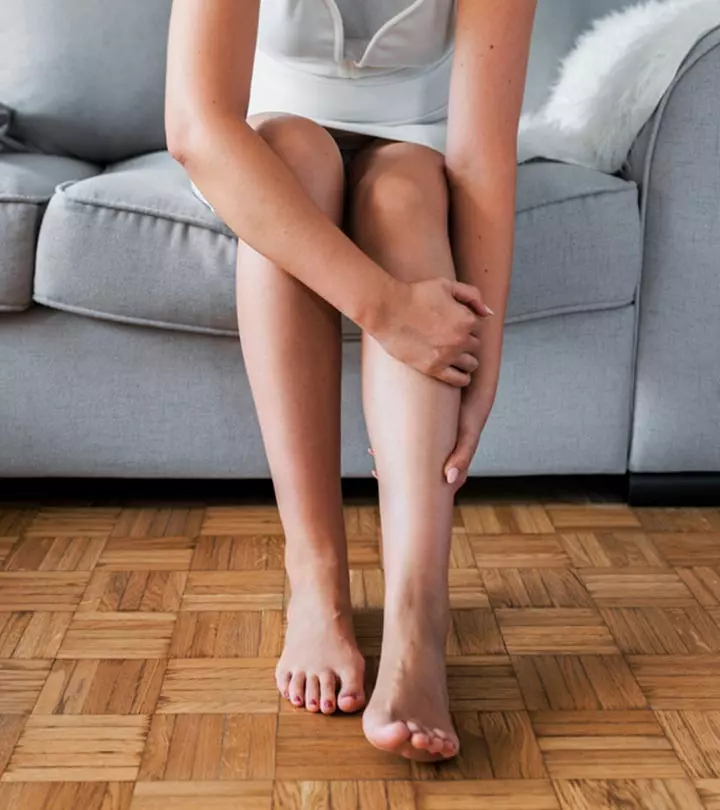
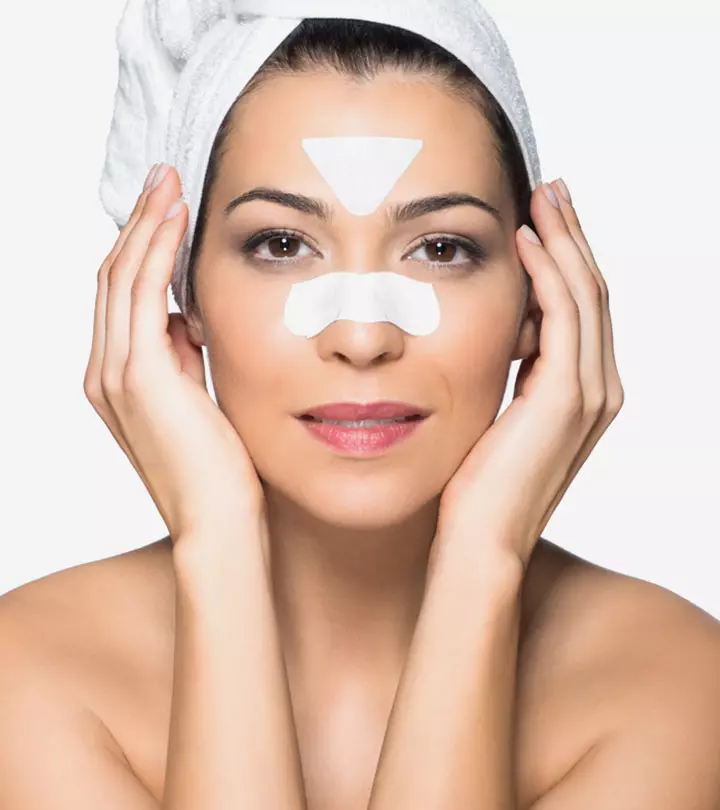
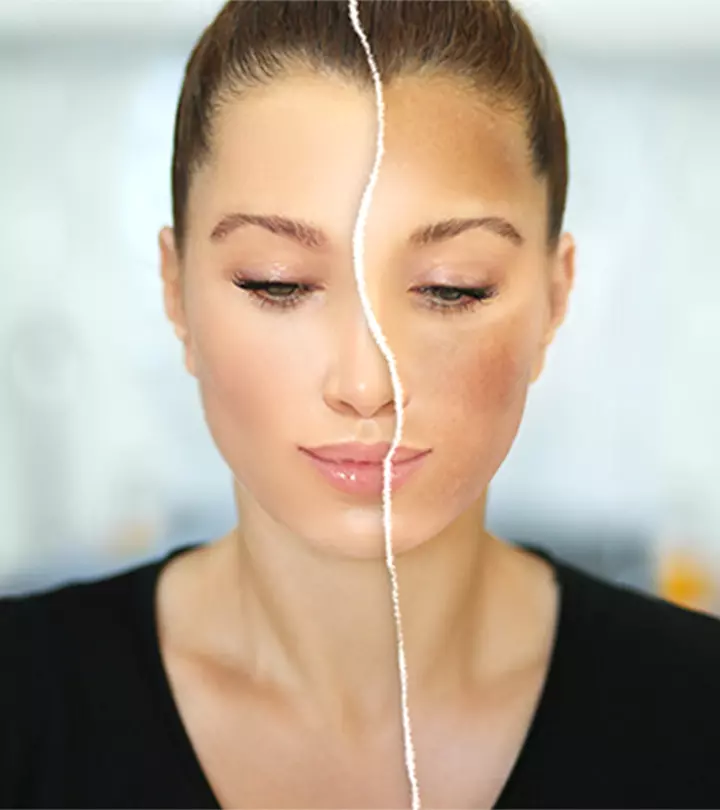




Community Experiences
Join the conversation and become a part of our empowering community! Share your stories, experiences, and insights to connect with other beauty, lifestyle, and health enthusiasts.